From the February 2024 issue of Apollo. Preview and subscribe here.
Lying to the south and east of Salzburg, the Salzkammergut is a place of narrow valleys, glassy lakes and billowing mountains. Before the emergence of skiing, hiking, climbing and Instagramming, the communities of this part of Alpine Austria made their money from salt. Beneath impenetrable forests of pine, in dark, fetid cavities hewn into nameless limestone bluffs, miners whittled hunks of salt from sweating rocks and carried them into daylight. The Salzkammergut burgeoned on the back of this dangerous enterprise. Mining towns such as Hallstatt sent substantial sums to the imperial exchequer in Vienna and received privileges and tax exemptions in return. In Salzburg, successive archbishops constructed an exquisite baroque capital from the duties collected from merchants bringing salt to market. Smugglers seeking to evade the archbishops’ imposts trod down some of the earliest mountain trails.
Industrialisation rendered the small-scale salt mines of the region largely obsolete, but the ‘white gold’ brought a second boom to the region in the 19th century with the craze for salt-water bathing. At Ischl, a hill-girdled settlement in a valley created by the Traun river, a physician called Josef Götz began offering brine-based cures to aristocratic patients. The imperial surgeon in Vienna recommended Götz’s therapy to the childless Archduchess Sophie, daughter-in-law of Emperor Francis II. She and her husband visited Ischl on several occasions in the late 1820s to bathe and drink from the local springs. The birth of a son, the future emperor Franz Josef, in 1830 and four further children in subsequent years attested to the apparent healing properties of Ischl’s salt waters.
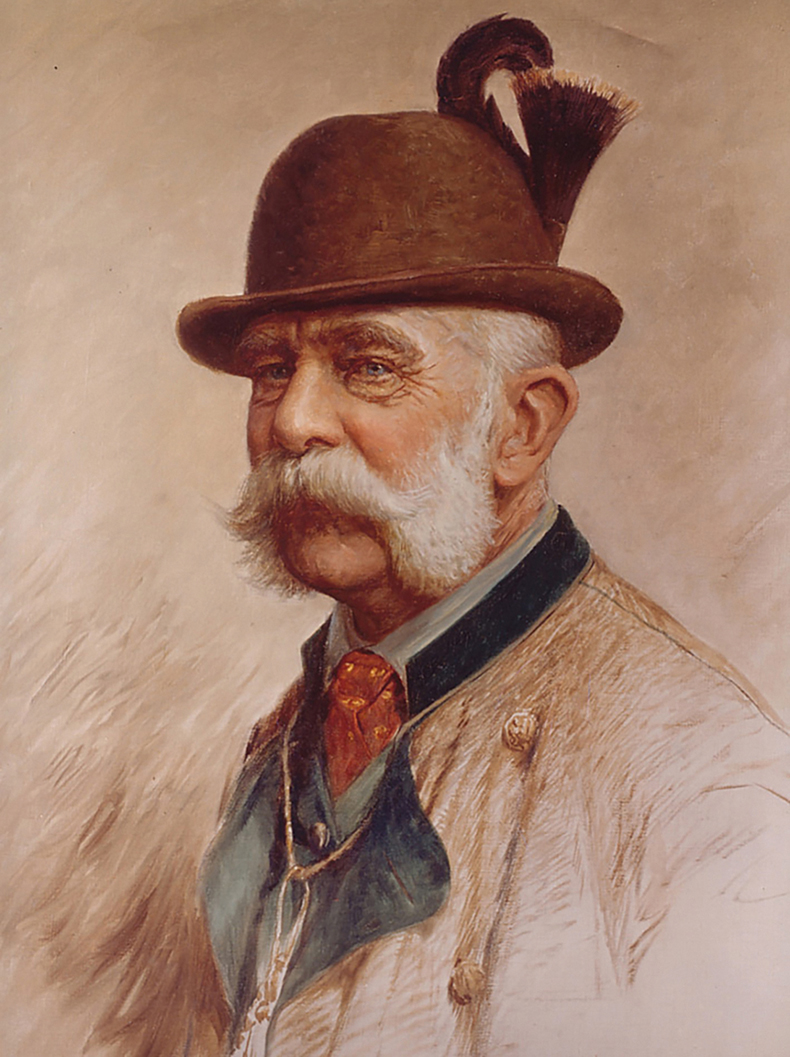
Portrait of the Emperor Franz Josef in his declining years. Courtesy Kaiservilla, Bad Ischl
Thereafter, the town became a popular resort for royalty, statesmen and celebrities, the banks of the river crowded with villas. Franz Josef himself acquired a residence in the town in 1853 and spent the summer months there, accompanied by his family and courtiers. It was in this ‘earthly paradise’ that he celebrated his birthday every year, on 18 August. By 1906, when it became Bad Ischl, the place had the trappings of a typical spa town: cafes, hotels, theatres, promenades, bathing salons and an imperious post and telegraph office decked out in historicist style, for although it was important for Austria-Hungary’s rulers to have time to recuperate from the strains of governing a multinational empire, the outside world could not be allowed to carry on entirely unattended.
Bad Ischl is one of three cities sharing the title of European Capital of Culture for 2024. At first glance, it seems a counterintuitive choice. Bad Ischl has not been an obvious centre of cultural production since the time of Franz Josef, when the waltzes of the Strauss dynasty rung around the Kurhaus, Bruckner played the organ in the church and the Hungarian-born composer Franz Lehar took up residence in a boxy riverside mansion. Even in its heyday, the kind of art that prospered here – chiefly, the instrumental recital and the operetta – had been safely road-tested in the metropolis before being carted out, bodices and all, to the provinces. More than one eyebrow might be raised if the same honour were bestowed on, say, Crathie or East Cowes.
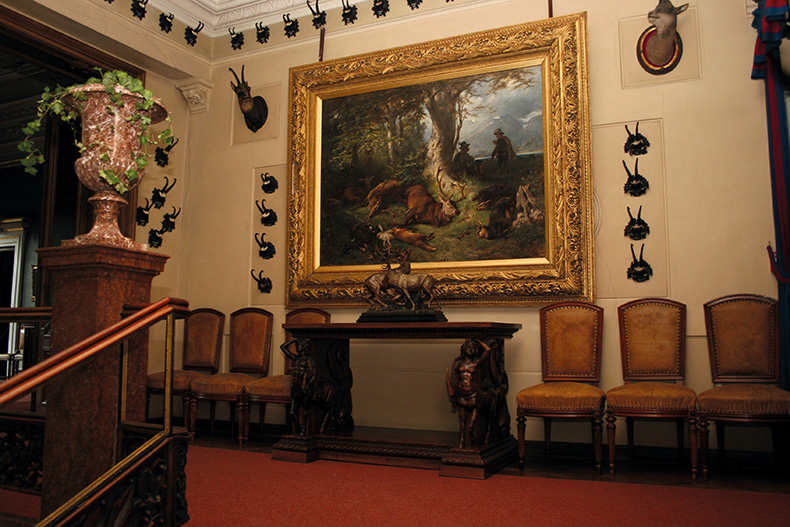
At the top of the main staircase. Photo: courtesy Kaiservilla, Bad Ischl
At the heart of Bad Ischl sits the Kaiservilla, possibly the closest 19th-century royalty came to inhabiting a bungalow. It consists of low, simple block embellished only with a neoclassical portico and a set of friezes featuring stags – hunting being the emperor’s chief occupation when he travelled into the mountains. An air of informality is immediately conveyed by the creepers wrapped around the columns in front of the entrance. With its Biedermeier furniture and ubiquitous arrangements of antlers, this was not a place for displays of connoisseurship by its Habsburg inhabitants. Indeed, the Romantic sensibility of the place would have been disturbed by anything too fine. The 19th-century landscapes on the walls barely distract from the views through the wide windows up the spruce-laden mountain of Jainzenberg. There was not even space within the Kaiservilla’s dozen or so rooms for a kitchen, let alone the richly decorated state apartments required for entertaining royalty. Ministers and visiting dignitaries, among them King Edward VII, were bivouacked in guesthouses in town while Franz Josef himself retreated every night to a narrow soldier’s bed in a whitewashed room.
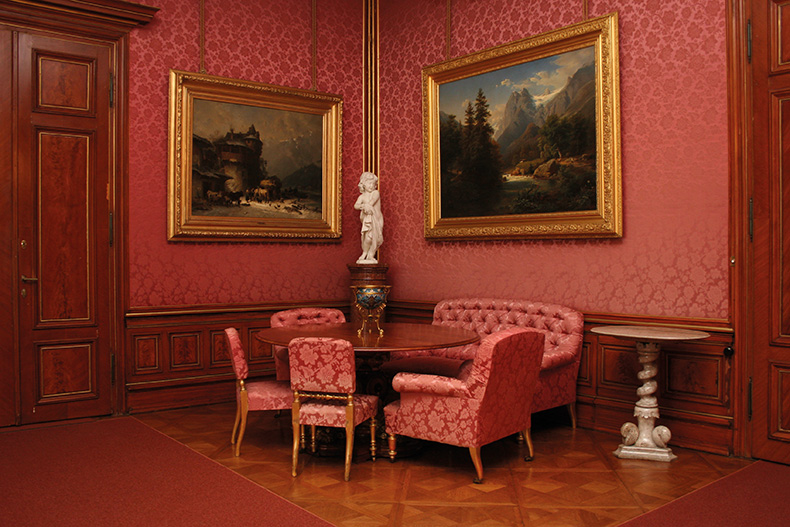 If the Kaiservilla’s appearance is decidedly middle class, so too were its origins. The house had belonged to a lawyer before being acquired by Archduchess Sophie, to whom the town owed its place in the Baedeker. Sophie presented the house to Emperor Franz Josef and his future wife, Elisabeth of Bavaria, upon their engagement in 1853, possibly hoping that the waters of Ischl would grant them the same fertility they had brought her. The emperor subsequently remodelled the building – the new E-shaped layout being, according to legend, intended as a tribute from Franz Josef to his wife. If the story is true, it was really the only concession Franz Josef made to Elisabeth – better known as Sisi – there. The restless empress might have relished the thicketed slopes and steep climbs around Ischl, but the plain Kaiservilla was not to her tastes. Her own preferences found expression in the Marmorschlössl, a private retreat she had built in the Kaiservilla’s wooded grounds in an appropriately Elisabethan style, with turrets, finials and miniature crenelations.
If the Kaiservilla’s appearance is decidedly middle class, so too were its origins. The house had belonged to a lawyer before being acquired by Archduchess Sophie, to whom the town owed its place in the Baedeker. Sophie presented the house to Emperor Franz Josef and his future wife, Elisabeth of Bavaria, upon their engagement in 1853, possibly hoping that the waters of Ischl would grant them the same fertility they had brought her. The emperor subsequently remodelled the building – the new E-shaped layout being, according to legend, intended as a tribute from Franz Josef to his wife. If the story is true, it was really the only concession Franz Josef made to Elisabeth – better known as Sisi – there. The restless empress might have relished the thicketed slopes and steep climbs around Ischl, but the plain Kaiservilla was not to her tastes. Her own preferences found expression in the Marmorschlössl, a private retreat she had built in the Kaiservilla’s wooded grounds in an appropriately Elisabethan style, with turrets, finials and miniature crenelations.
Ischl didn’t quite work its magic on the imperial couple in the way it had on Archduchess Sophie. Although Franz Josef and Sisi had three daughters, in Austria-Hungary women were barred from the throne. Only one son, Archduke Rudolf, emerged from the marriage. It was Rudolf’s suicide alongside his lover at Mayerling in 1889 that precipitated the fall of the house of Habsburg. After this, the succession fell on Franz Josef’s headstrong nephew Franz Ferdinand, who in June 1914 was assassinated in Sarajevo. It was at the Kaiservilla the following month that Franz Josef, not allowing the rolling diplomatic crisis to disturb his time-honoured summer routine, issued the ultimatum to Serbia that set in motion the First World War. One hopes, of course, that Bad Ischl’s return to the spotlight this year does not portend a similar calamity.
Medicine has moved well beyond salt cures and the Kurhaus of Bad Ischl is now a conference centre. Nonetheless, the birth of Franz Josef, the first of Archduchess Sophie’s ‘salt babies’, is still celebrated on 18 August every year with marches, hymns and parades. If Bad Ischl has never exactly been an engine of artistic production, it nonetheless stands as a monument to the culture of wellness. We might think of this merely as a contemporary phenomenon, but already in the 19th century it had the power to bring whole societies into existence from almost nothing. In that sense, at least, Bad Ischl is an exemplary Capital of Culture.
From the February 2024 issue of Apollo. Preview and subscribe here.
Unlimited access from just $16 every 3 months
Subscribe to get unlimited and exclusive access to the top art stories, interviews and exhibition reviews.

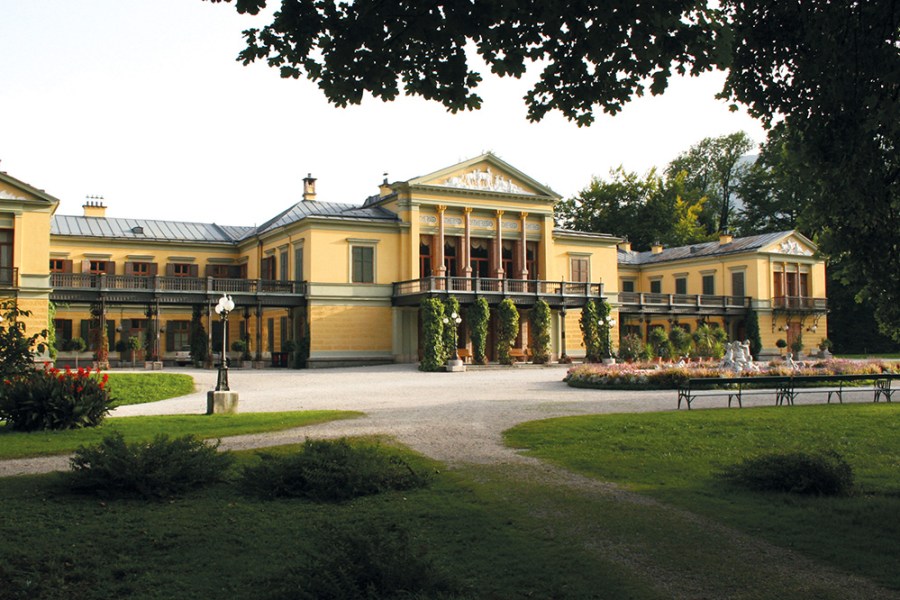
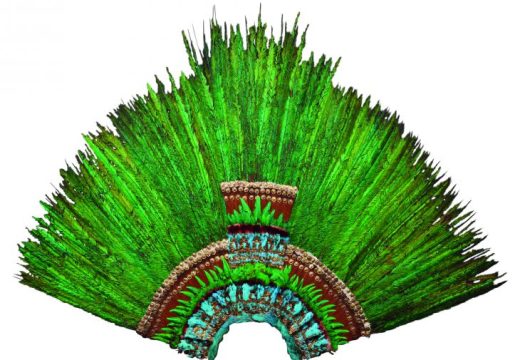
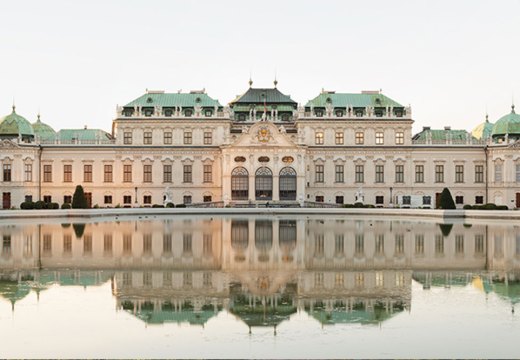


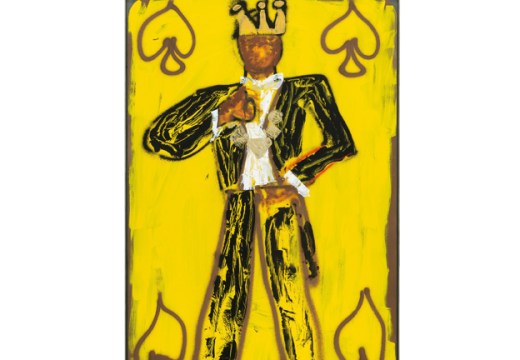







![Masterpiece [Re]discovery 2022. Photo: Ben Fisher Photography, courtesy of Masterpiece London](http://www.apollo-magazine.com/wp-content/uploads/2022/07/MPL2022_4263.jpg)
Has the Fitzwilliam lost the hang of things?